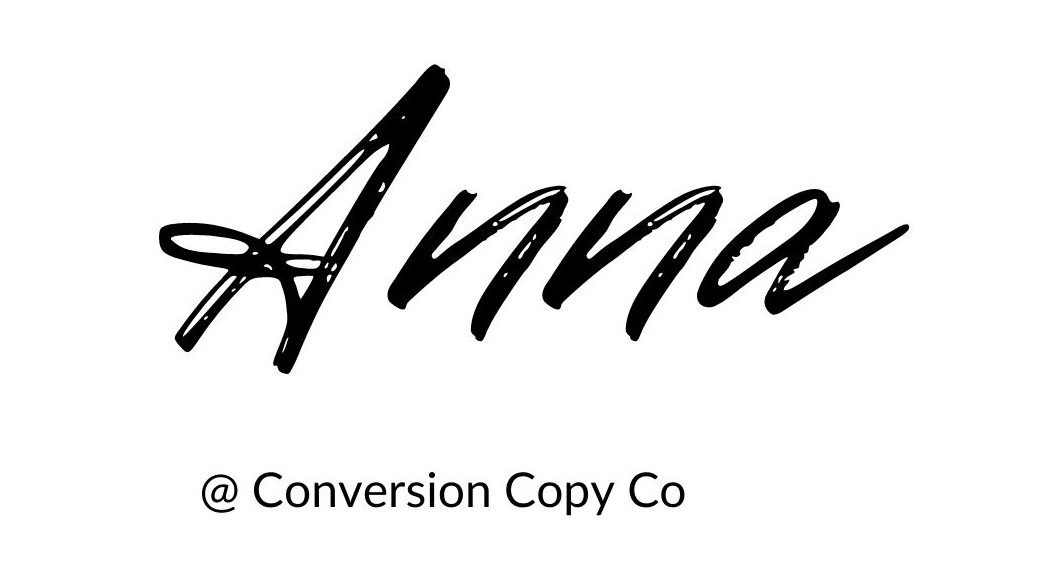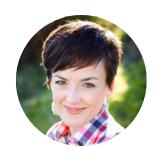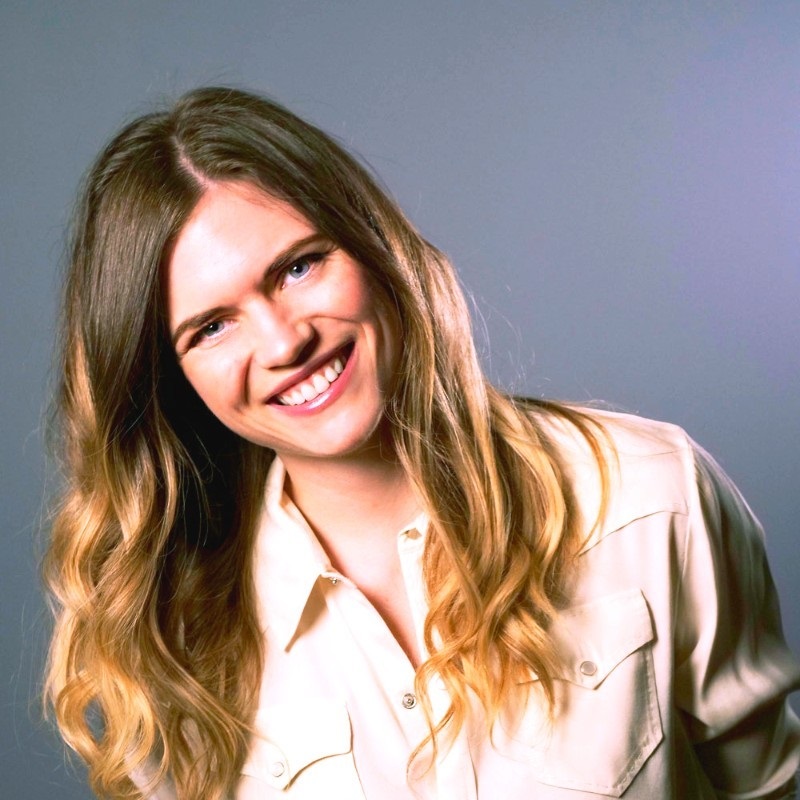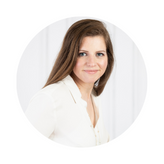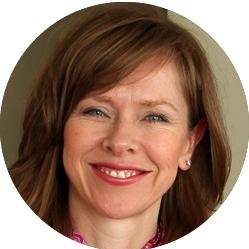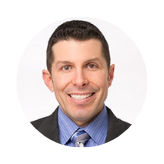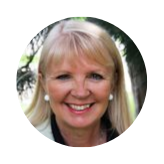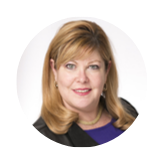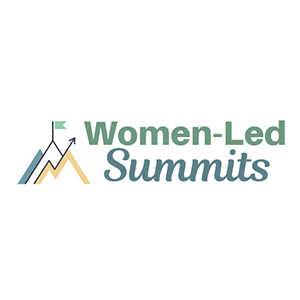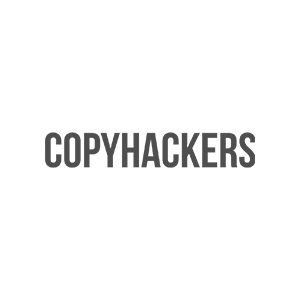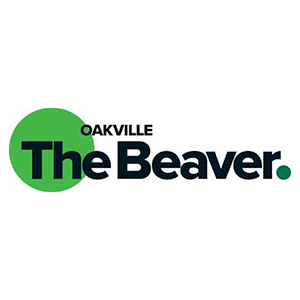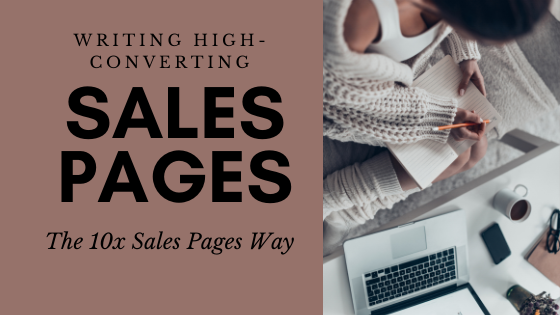
If you need to sell an online course, a high-ticket program, product or service…
Then, you might need a long-form sales page.
Because short pages just aren’t always enough to get online leads to say yes to a higher-priced purchase.
But where do you start writing a long-form sales page?
With a copywriting formula, of course – and one from a leading conversion copywriter, ideally.
There’s no conversion copywriter more trusted than Joanna Wiebe of Copyhackers.
And so it was a huge privilege when last summer, 2019, Joanna hired me to write a long-form sales page. It was for the launch of 10x Facebook Ads, one of the courses now inside Copy School, Copyhackers’ online training for copywriters, digital marketers and entrepreneurs.
To write that sales page, I turned to Joanna’s own 10x Sales Pages course inside Copy School.
In this post, I’ll walk you through the method I used to write that long-form sales page for Copyhackers, using Copyhackers’ own methods… so, yes, we’re getting very meta here.
If you haven’t taken Copy School and you write sales copy of any kind…
I’d recommend you get on the waitlist. It’s the best investment in my business I’ve ever made.
Before Copy School I’d written course sales pages… and they were fine. But the Copyhackers training gave me more sophisticated techniques, more confidence.
Especially when it comes to sales pages, which are some of the highest-pressure pieces of copy we write.
They’re long, it’s easy to get confused about the messaging hierarchy… and a sales page can make the difference between a so-so launch and a fantastic launch.
This post is not meant to be a substitute for taking 10x Sales Pages if copywriting is your responsibility. There is no substitute. But putting this outline together with examples helped me remember what goes where, how and why on the page.
Here’s how I used 10x Sales Pages
The Copy School training on sales pages has two “tracks”, each a course in itself.
Track one is by Joanna, teaching the classic sales page formula, Problem-Agitate-Solution, with a fancy Why-Try-Buy extension.
Track two is by Ry Schwartz and teaches his Coaching the Conversion method for sales page copy.
If you’ve been following online launches in recent years, you’ll have seen signature Schwartz sales pages in Amy Porterfield’s launches and elsewhere.
(Hint: You can spot it right away because of the pre-headline qualifier and question loop headline. More on that, below.)
You could use just one 10x Sales Pages track and run with it – write your entire sales page following either the Joanna or the Ry approach.
But I decided to use both.
Because Ry’s Coaching the Conversion felt more detailed on technique. Whereas Joanna’s track gave me a clear and memorable overview of the structure (or messaging hierarchy).
Here, I’ll share what that hybrid approach looked like as a page outline.
When you combine both 10x Sales Page methods in one long-form sales page…
You get something like the below, where the main headers are from Joanna’s PAS-Why-Try-Buy formula and the sub-sections are from Ry’s Coaching the Conversion method. (I’m an outline nerd, yes.)
This is more like a blueprint than a formula…
But it doesn’t do justice to the level of detail and guidance you’ll actually get inside Copy School. (Again – if you write copy, buy nothing else. Just Copy School.)
To illustrate each element here, I’m including screenshots from sales pages by well-know course creators.
1. Problem
Why nothing until now has worked to solve the most intense pain points your one reader feels.
Section 1: The Pre-Headline Qualifier*
Call out to reader by stating who it is you’re talking to. E.g. “Important question for conversion copywriters writing for course launches”.
Section 2: The Question Loop Headline*
Pose a question to that specific audience highlighting the gap between the desired outcome and the current pain points.
E.g. “What’s the difference between a copywriter who easily commands $5k for a sales page and a copywriter who struggles to get paid $500 for the same job?”
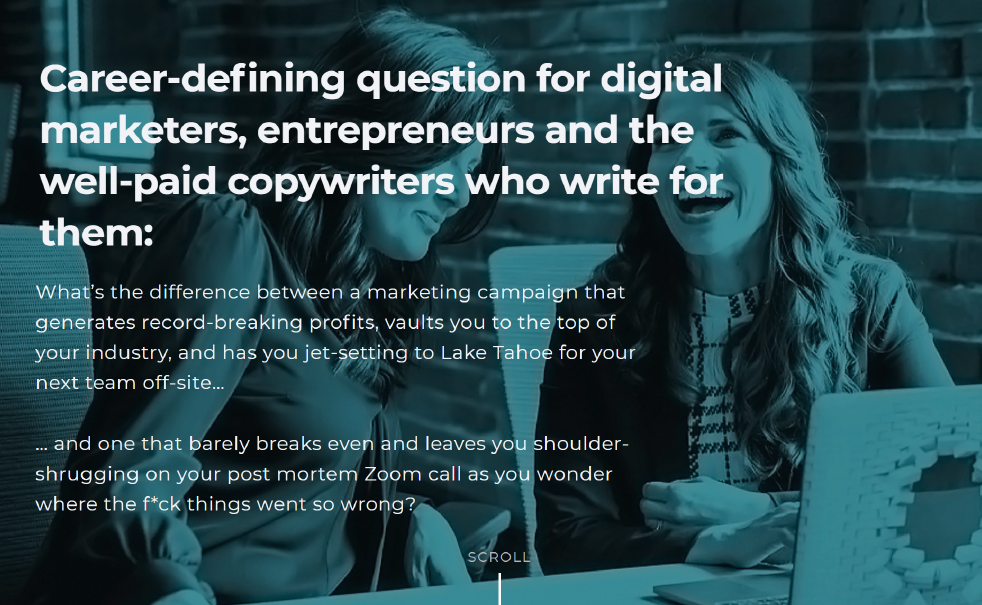
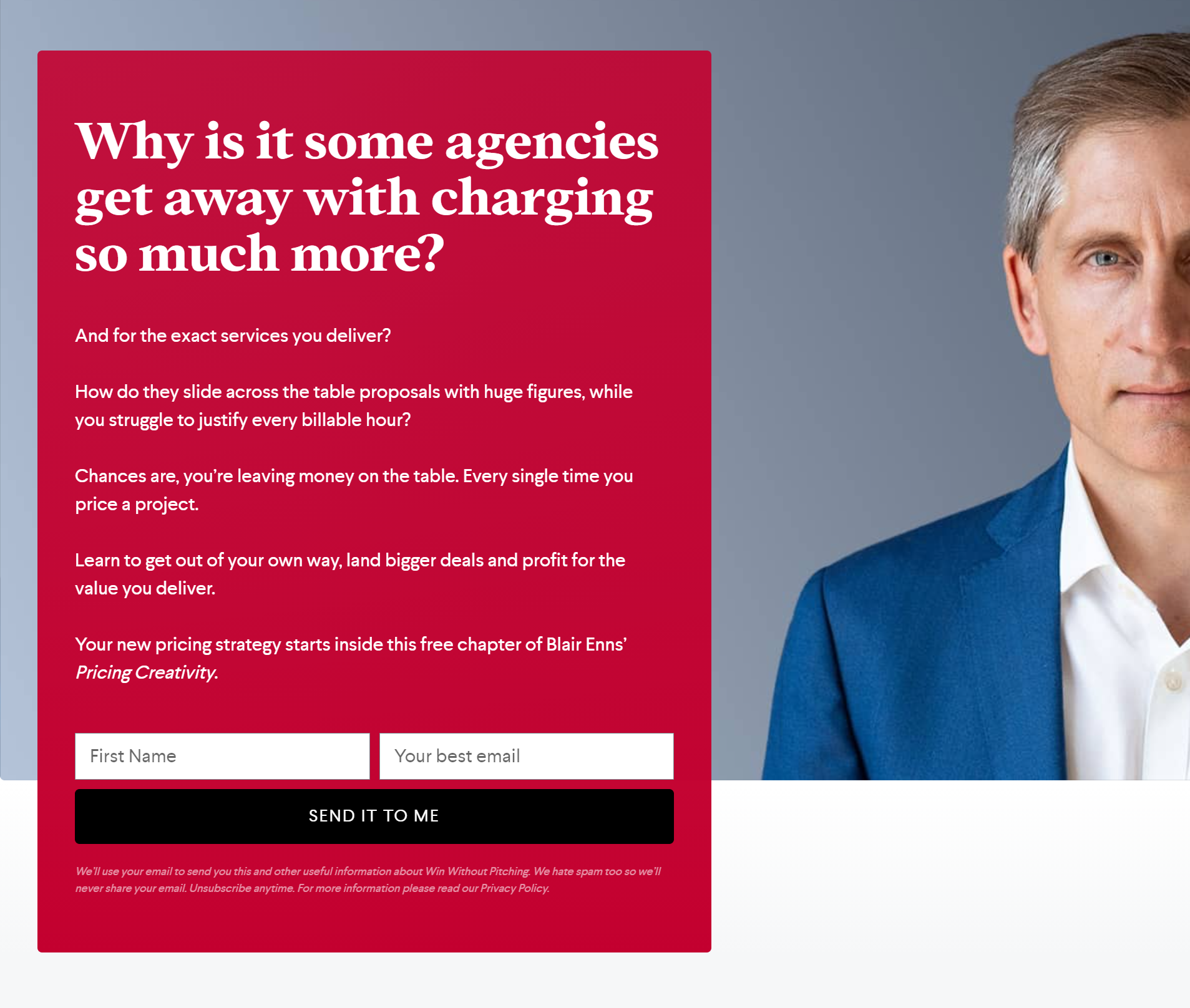
Section 3: The Lead
Expand on the Question Loop or the problem posed in the headline, unpacking the importance while ramping up the stakes in having it answered/solved.
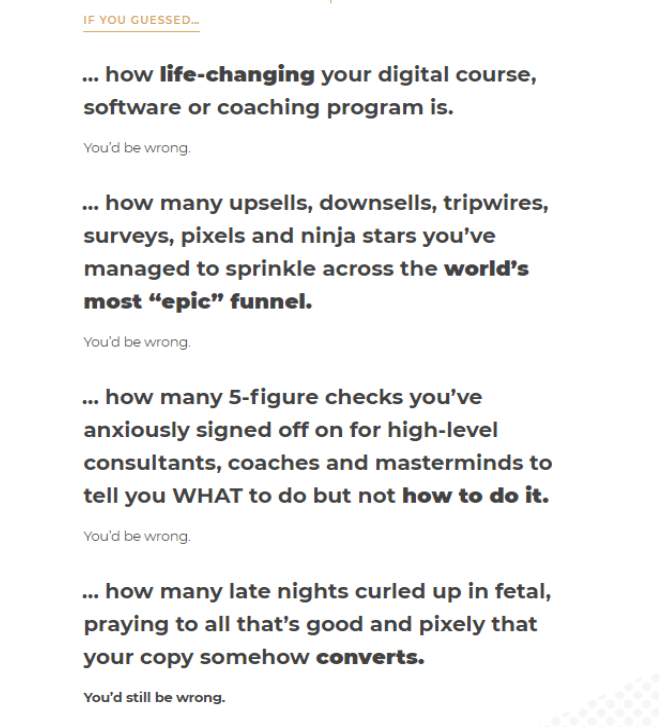
*Sidebar note about this whole question header approach:
Most sales page formulas start by defining the problem as a statement vs. Ry’s formula, which opens by posing a question.
You can choose to do either: start by stating the problem or start by asking a question.
If you start with a statement, you continue describing that problem as you move from the hero section to the “lead” or opening section of the sales page.
If you start with Ry’s question formula, you proceed by expanding on the question posed.
2. Agitate
Describe what life looks like now for your reader, in detail, versus what it could look like — emphasizing that it’s not your reader’s fault. Specifically, it’s not their fault because the solutions they’ve been offered before fell short in some important way.
Section 4: The Moment of Highest Tension
Describe a very specific low point or crisis moment when the reader felt the most intense symptoms of the problem you can solve. Where were they at that moment? What were they doing to cope? How did it feel in vivid, intense language?
Section 5: The Moment of Highest Pleasure
Now, what does your reader want instead of this persistent problem they have? What’s the dream?
Here, you validate that desired outcome stated as a specific moment: the “moment of highest pleasure”.
When the problem has been resolved, what will that moment of triumph look like? How will they know they’ve made it?
Highlight the friction between that dream and where your reader is now.
Section 6: Slaughtering The Sacred Cows/Belief Installation
This is a slightly trickier concept, so I’ll explain it in more depth here.
When Ry talks about slaughtering the sacred cows, he’s referring to a technique we use in sales pages where we undercut the beliefs holding your reader back from taking the next step. (Often, sunk costs of doing things the old way.)
For example, in Copy School, Copyhackers slaughters the belief that entrepreneurs just need fancier funnels to finally get growth. This myth perpetuates the pain entrepreneurs experience when their funnels don’t convert.
Then, when you’ve taken down those commonly-held beliefs, you install a new belief aligned with your solution. E.g. No, in fact, nothing will change in your business until you learn the critical skill of conversion copywriting.
Remind the reader of the symptoms they experience because they haven’t released the old beliefs. Reiterate the outcomes they can enjoy when they embrace the new beliefs (and your solution).
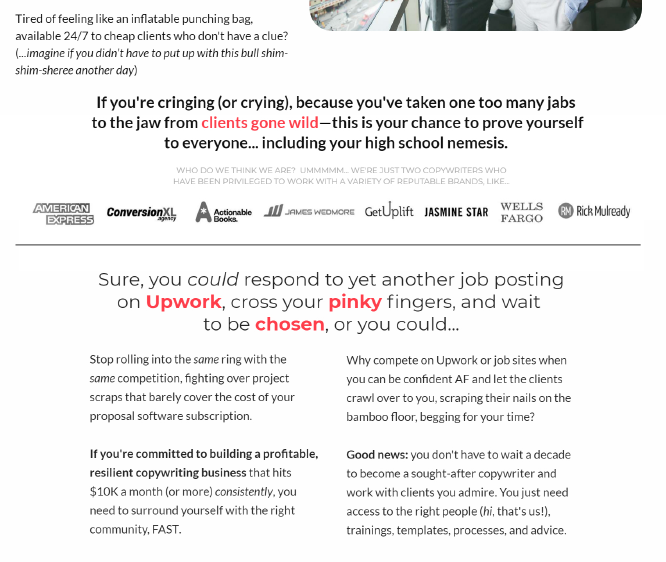
3. Solution
Why other solutions have failed the one reader… as a set up to introduce the offer/your solution.
This is initially an extension of your argument above: why the current solutions your reader relies on aren’t working… but there’s a better solution available.
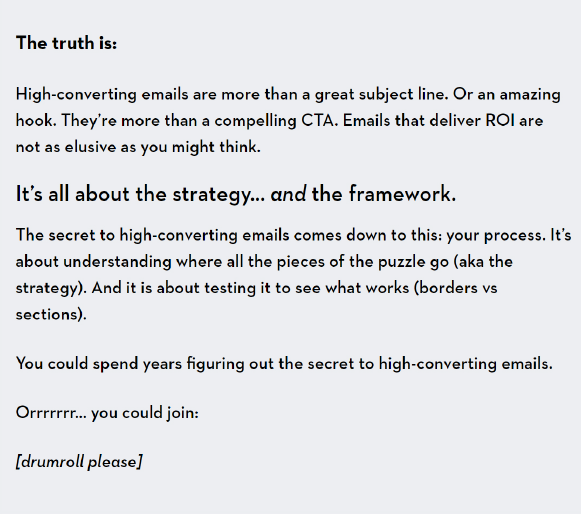
Section 7: The Blue Ocean Bridge
Introduce the solution that will change everything and deliver the “moment of highest pleasure”.
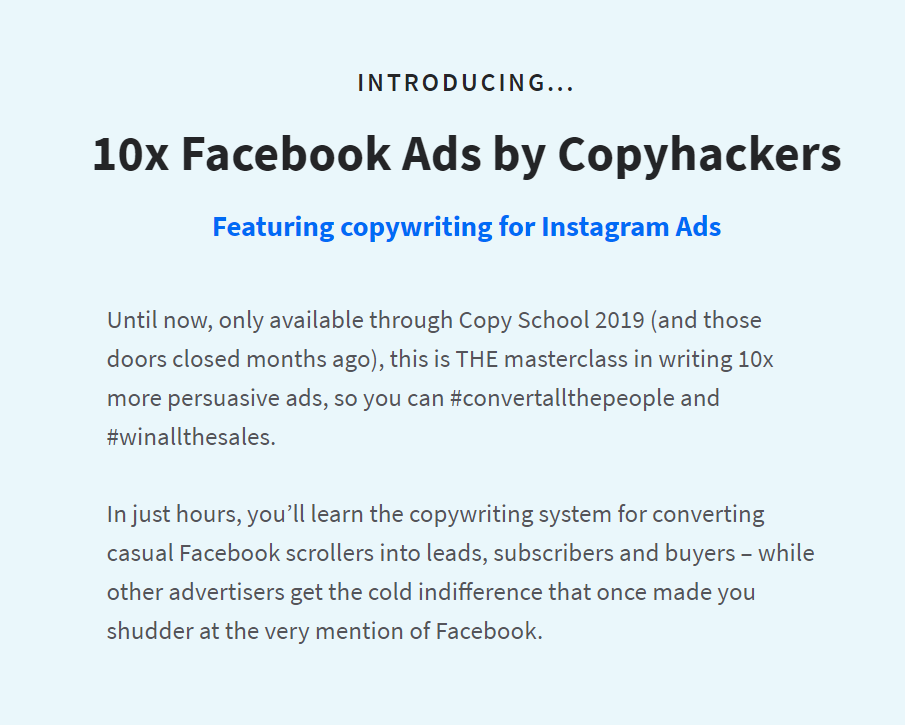
4. Why
Why YOU have the answer; why this solution was made to solve this very specific problem; and why it’s better than anything else for your reader.
Section 8: Solidifying Beliefs Part 1 (Your Bio)
Tell the story of what brought you to create this solution for your reader.
Emphasize how you stand with them against the common enemy (their barriers to achieving the desired outcome).

Section 9: Solidifying Beliefs Part 2 (Testimonials)
Insert a client/customer story here, defining life before they had your solution, the tipping point that caused them to seek your solution and life after, with your solution.
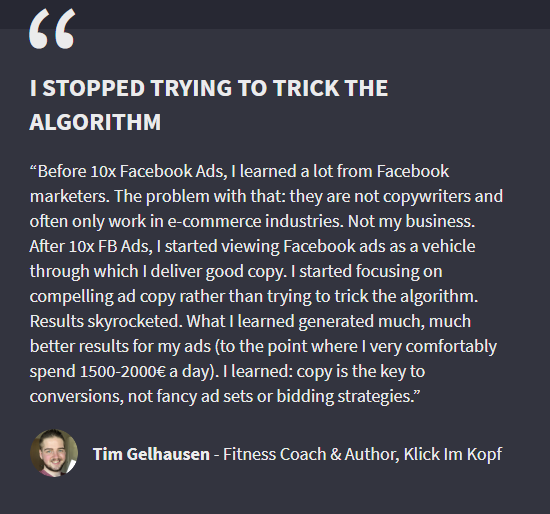
Section 10: The Product Reveal
Introduce the full product/solution by name, stating the promise, reiterating the moment of highest tension, aka the most painful problem.
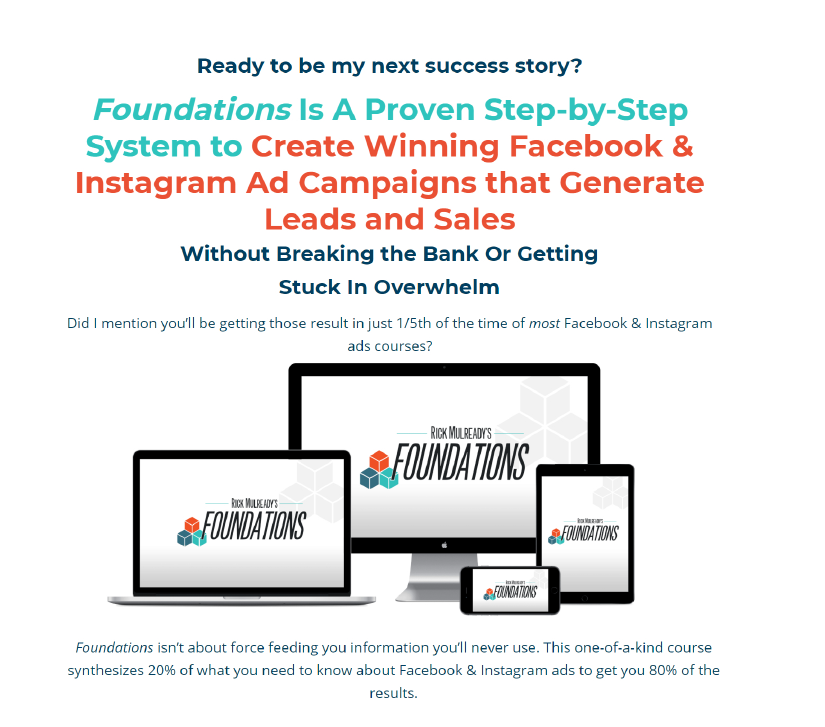
5. Try
Reveal the full offer, all the value therein, and the promise.
Explore the features — always linked to benefits. Bring in more proofs like testimonials, case studies, stats that reinforce you have what it takes to help the reader realize the outcome.
Section 11: The Aladdin Product Tour
Show off everything inside your solution, treating each element as a mini sales page.
If you’re selling a course or online program, give each program module a headline, lead and benefit/feature bullets.
Reveal the bonuses and all the value therein.
Back the value of the product up with more proofs.
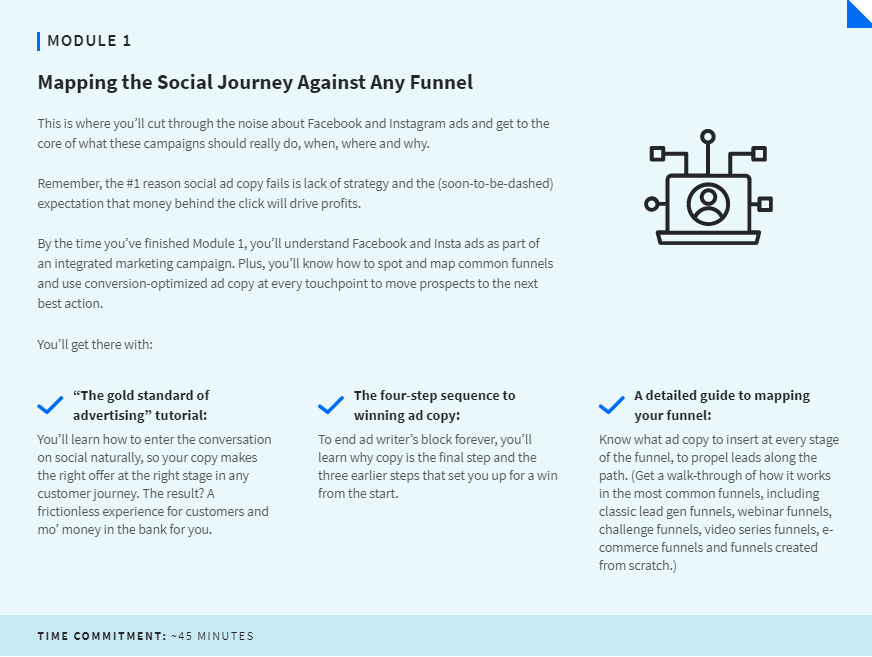
6. Buy
Use more closer-type testimonials focused on ROI; inject social proof; emphasize the value in the bonus; reveal scarcity; reverse the risk; invite the reader to identify with the buyer.
Section 12: The Golden Guarantee
Unlike a regular guarantee, the Golden Guarantee is another piece of salesmanship.
Specify what the prospect needs to do to get the big outcome and all of those benefits reiterated here.
Confidently state how they can easily get a refund if they don’t realize those benefits.
Restate your unique selling proposition here and reveal how there’s virtually no risk.

Section 13: The Upgraded FAQ (Close #1)
Counter objections and coach decisiveness by framing objections as the exact questions ideal prospects ask before realizing the value inside the offer.
Each FAQ addresses a different objection and flips it into an argument for your solution.
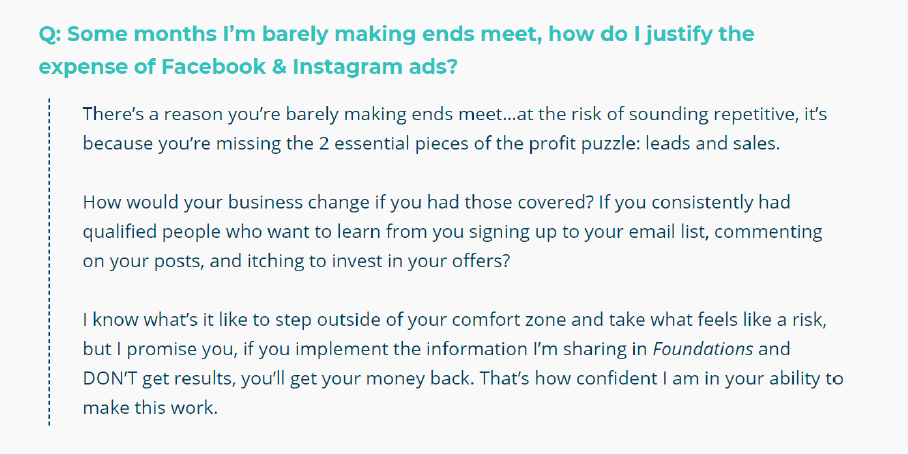
Section 14: The “Perfect For You If” (Close #2)
Coach your prospect to understand whether they are, in fact, the ideal buyer.
Write a list of criteria that describe the buyer who will get the results you promise based on their unique characteristics, attributes, experiences, abilities.

Section 15: The Final Confident Appeal
If you opened with a question, here’s where you give the succinct answer, confidently pointing again to your solution. E.g. “By now you already know that… “
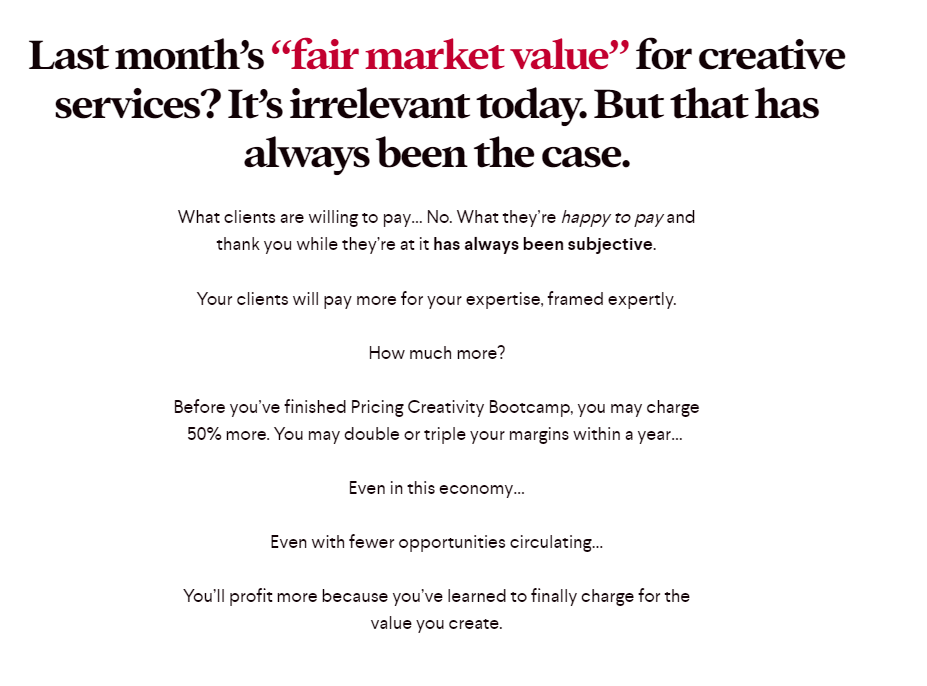
Bonus Close 1: The Risk Mitigator Close
As stated, this is a bonus close, so it’s optional and can be used as a sub for close #1 or #2 above.
In the risk mitigator close, you spell out the potential risks the reader faces if they don’t take this opportunity now.
How will they miss out? What’s the specific cost?
Then frame that against the virtually nil risk of saying yes to this solution when covered by the Golden Guarantee.
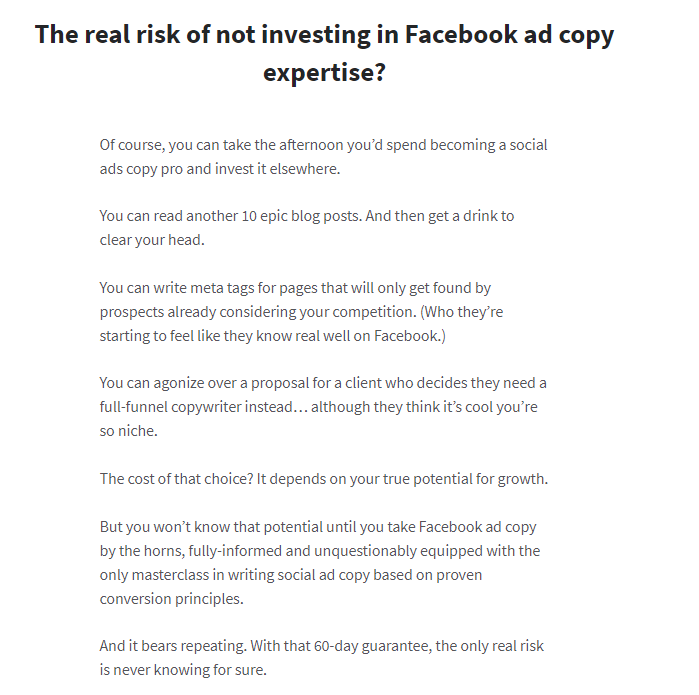
Bonus Close 2: The Minimum Viable Commitment / Quickest Viable Win “Challenge” Close
In this alternative bonus close, you wrap by posing a challenge for the reader to realize the quickest viable win with the minimum of effort.
If they put in this minimum investment of effort, what quick win can they realize? E.g. Can they write their first pain-free Facebook ad campaign?
Remind them they’re covered by the guarantee if for any reason they don’t realize this quick win.
Note: I’m still searching through my sales page swipe files for a good example of this final, bonus close. (Is everybody just exhausted from writing sales pages at this point??)
Alright, deep breath. That was a mouthful.
If you follow this sales page blueprint, you’re going to write very long copy
Like, 3x longer than anything you’ve written, potentially.
The final copy for my 10x FB Ads sales page was ~9,000 words. (3,000 to 4,000 words is considered a long sales page, for context.)
But Joanna went with it. “People who spend time spend money,” she said when I apologized for the length.
Using this blueprint makes for long sales pages for two reasons:
a) It challenges you to take a long journey with your reader. A journey that starts by diving deeply into the problem. And as a sales tool, it includes arguments from angles you might not have considered.
b) If you follow the Copyhackers methods, you know it’s all about customer research. Schwartz’s method gives you 67 questions to answer about your ideal buyer and your relationship to that audience before you even start writing. When you do that level of research, you have a lot of insight to work with… and it’s hard not to want to use it all.
(To learn more about this, watch me teach my sales page research process in this Tuesday Tutorial with Copyhackers.)
But does a sales page have to be THIS long?
Colder audiences with lower awareness of the problem and solution need a longer journey – they need to be made aware before they can buy into your specific solution.
Warmer audiences with a higher degree of awareness often don’t. But a long sales page won’t deter them from buying.
Case in point: When I bought Copy School, I knew before it launched that I wanted to buy the course, but I had some moderate objections around the price. I didn’t need the top-of-page persuasion, but I did need to be reminded of all the value inside the program. (Copy you find around the middle of the page.)
The long copy is there to tip the undecided toward a fully-informed decision.
As Flint McGlaughlin of MECLABS explained when I worked with him on optimizing landing pages, “You want a preponderance of evidence.”
You want your reader – even skimming – to find such a dazzling number of reasons to believe in the value you offer, that even if their gaze only brushes over the subheadlines, they’re sold.
Want to see what a sales page looks like using this blueprint?
The more exposure you have to the flow of a sales page, the more natural it feels.
That’s why I always keep tabs on the latest course launches from leading digital marketers, read and save their sales pages for later reference.
Remember that most sales pages disappear after the launch period. So, if you don’t have a collection of sales page swipe files, you might not be able to find examples when you need them.
That’s why I love that Ry’s 10x Sales Pages track includes three IRL examples of sales page copy for each section he teaches. When I need to write a sales page, I refer back to those examples repeatedly.
Feel free to review the first draft of my 10x Facebook Ads sales page at your leisure in this Google doc. Make a copy in your own drive and play around with the techniques I’ve described above to write your own sales pages. (Just note that this 10x one is copyrighted by Copyhackers.)
And you can check out the final, live sales page here… as long as the 10x Facebook Ads course is for sale.
You’ll notice that in the draft version, we went with the open-loop question headline – as per Ry’s method. But in the final, published version, we went with a statement of the problem. You can choose either approach for your sales page.
As a final example, here’s a sales page I wrote using this approach:

Which brings me to the final point.
Sales pages are formulaic… but the formulas can be adapted
Once you know the purpose of each element, you have more freedom. You can make informed decisions about what makes sense for your specific audience and your specific offer.
Great sales pages aren’t as templated as you might expect. They’re a fluid conversation with your audience, which is only possible because you’ve done the deep research to get inside their heads.
The framework keeps you from going off the rails. The deep insight makes those moments on the edge of the rails powerful.
…
I no longer write course launch sales copy for clients, but I DO use the methods described above to write high-converting product sales pages for clients in B2C e-commerce.
Book a free consultation or slide into my calendar sooner when you book a VIP Day.
